Powdery mildew on plants - Experts explain what causes this harmful disease and how to get rid of it for good
Powdery mildew isn’t always fatal, but you still need to act fast
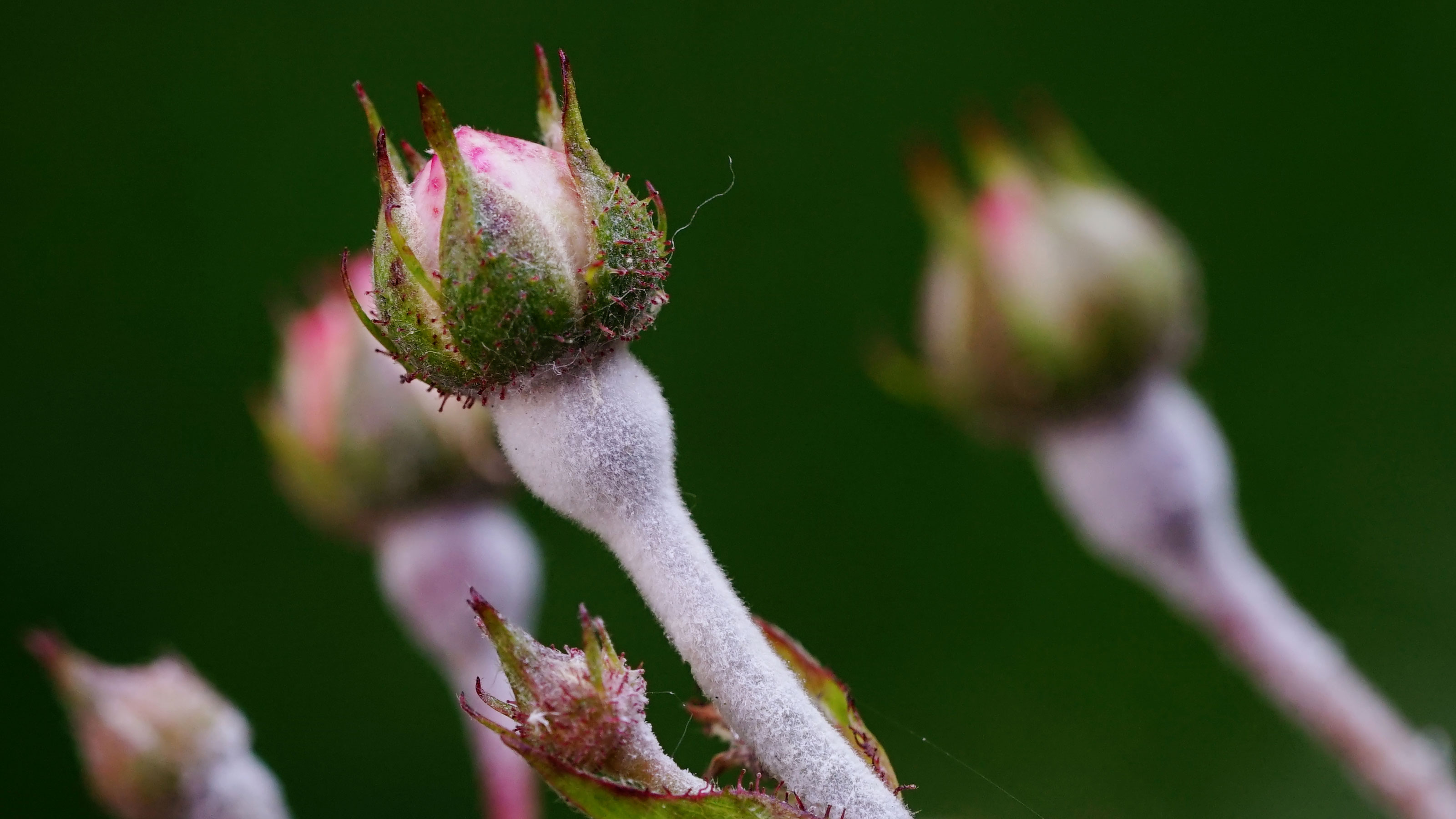

Tending to a garden can be relaxing. More often than not, however, having a garden and growing plants involves a lot of stress, a lot of problem-solving, and a lot of frantic Googling. But if you’re wondering why you have powdery mildew on your plants, you’ve come to the right place.
In the UK, many garden ideas are ruined by common garden pests (we feel like we spend our whole lives trying to get rid of slugs), ever-changing weather, and diseases that threaten the health and well-being of our plants. And while there are many common rose problems and diseases, powdery mildew can affect roses… and just about every other plant in your garden too.
That’s why we’ve consulted with garden experts to get the lowdown on powdery mildew on plants. Below, you’ll find everything you need to know about what causes powdery mildew, what it looks like, and how you can get rid of it once and for all.
What is powdery mildew?
Powdery mildew is a fungal disease that can affect almost every plant in your garden - from your fruits and vegetables to your ornamentals, your rhododendrons and even your wisteria. The fungus typically attacks the leaves and stems of the plant, resulting in a visible white powder.
John Clifford, gardening expert at Gardenstone, also adds, ‘Sometimes it might look like a thick coating of dust, or very thin cotton wool.’
However, what makes powdery mildew so difficult to control is that it’s not one single fungus. Different species of fungi can result in powdery mildew - meaning one type of fungus can affect your roses, and another can affect your cucumbers simultaneously.
But what causes powdery mildew? Well, experts agree that powdery mildew is normally the result of warm, wet weather and poor air circulation around the plant.
Get the Ideal Home Newsletter
Sign up to our newsletter for style and decor inspiration, house makeovers, project advice and more.
And while a visible white powdery substance is a sure sign that your plants have been infected, there are many other signs of powdery mildew to look out for. These include:
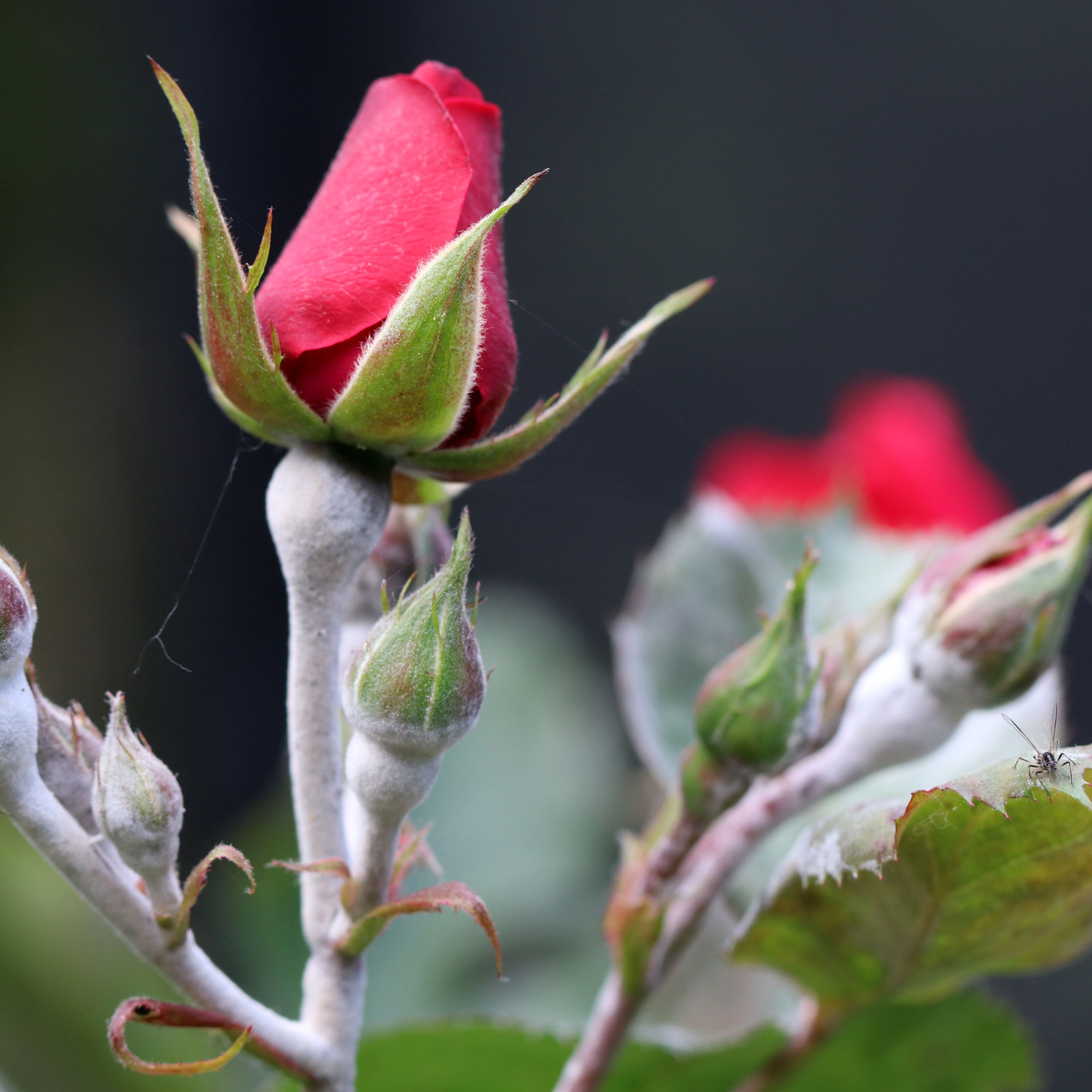
- Discoloured leaves.
- Curled or distorted leaves.
- Stunted growth.
- Poor fruiting or flowering.
- Lack of vibrancy.
- Bitter crops.
Thankfully, plants infected with powdery mildew will rarely die as a result of the fungus - but it can still affect the health and growth of your plants. In fact, the fungus can drastically weaken your plant, making it more susceptible to other diseases that could prove fatal.
Because of this, it’s best to treat powdery mildew as soon as you spot any of the signs above.

John Clifford is a director of Gardenstone, a leading garden landscaping retailer based in the UK. With over 30 years in the gardening industry and continual work alongside The National Trust, John has amassed an extensive range of gardening and planting knowledge. Alongside his younger son, John has built a strong reputation for Gardenstone as a trusted source for both high-quality garden products and expert gardening advice.
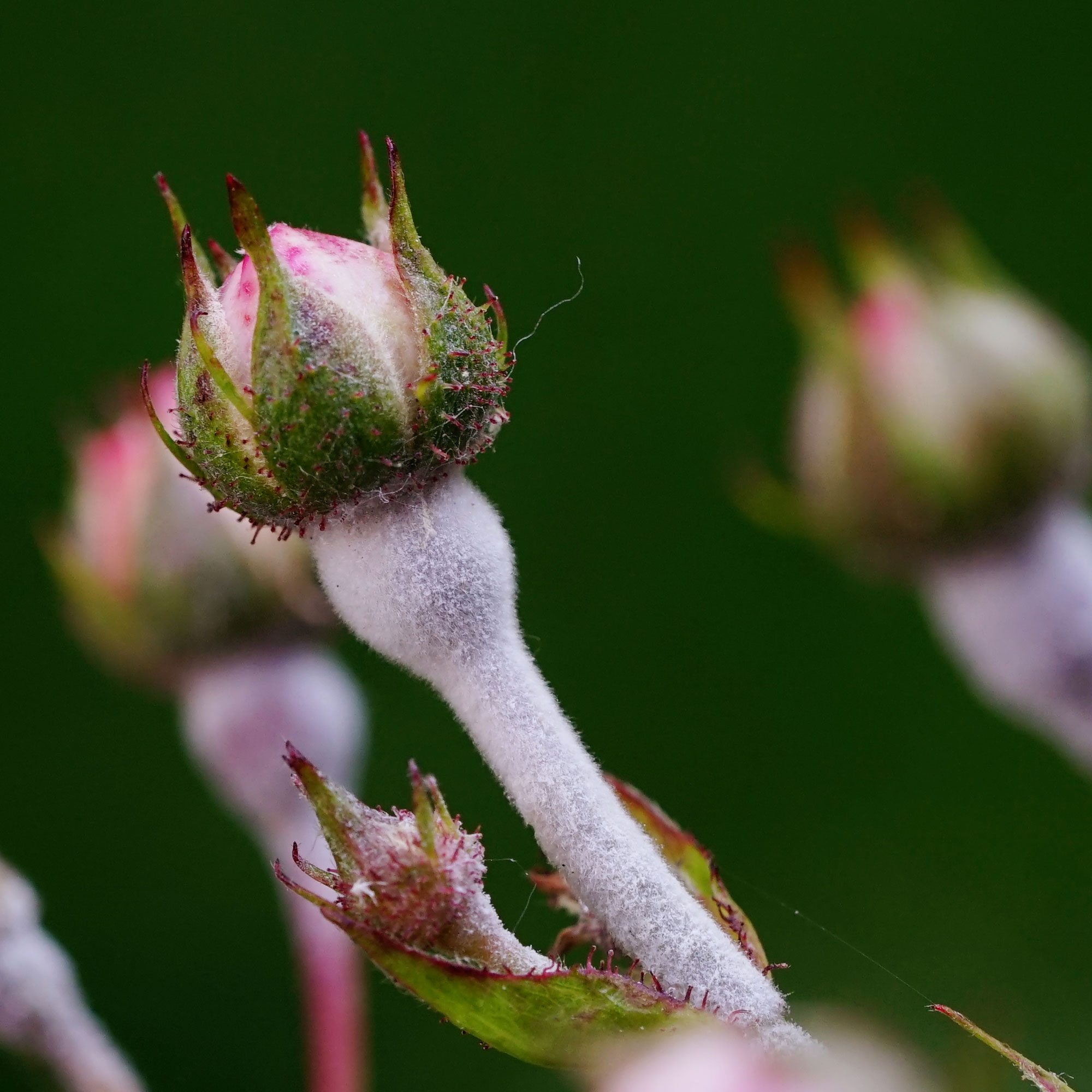
How to get rid of powdery mildew
There are many ways to get rid of powdery mildew and prevent its return. While chemical fungicides could be used, we always suggest using natural methods that won’t harm the wider environment.
1. Remove infected areas
In an ideal world, you should remove the whole infected plant to prevent the spread of powdery mildew. But we know that this isn’t always possible (or desirable), which is why you should first focus on removing the affected areas of the plant.
Make sure you clean your garden tools before doing this, and use pruning shears or secateurs to snip off the leaves or stems that have visible signs of powdery mildew.
Then, dump them in your general waste bin to dispose of them properly. Avoid putting the infected pieces on your compost heap, as this could aid the spread of the disease.
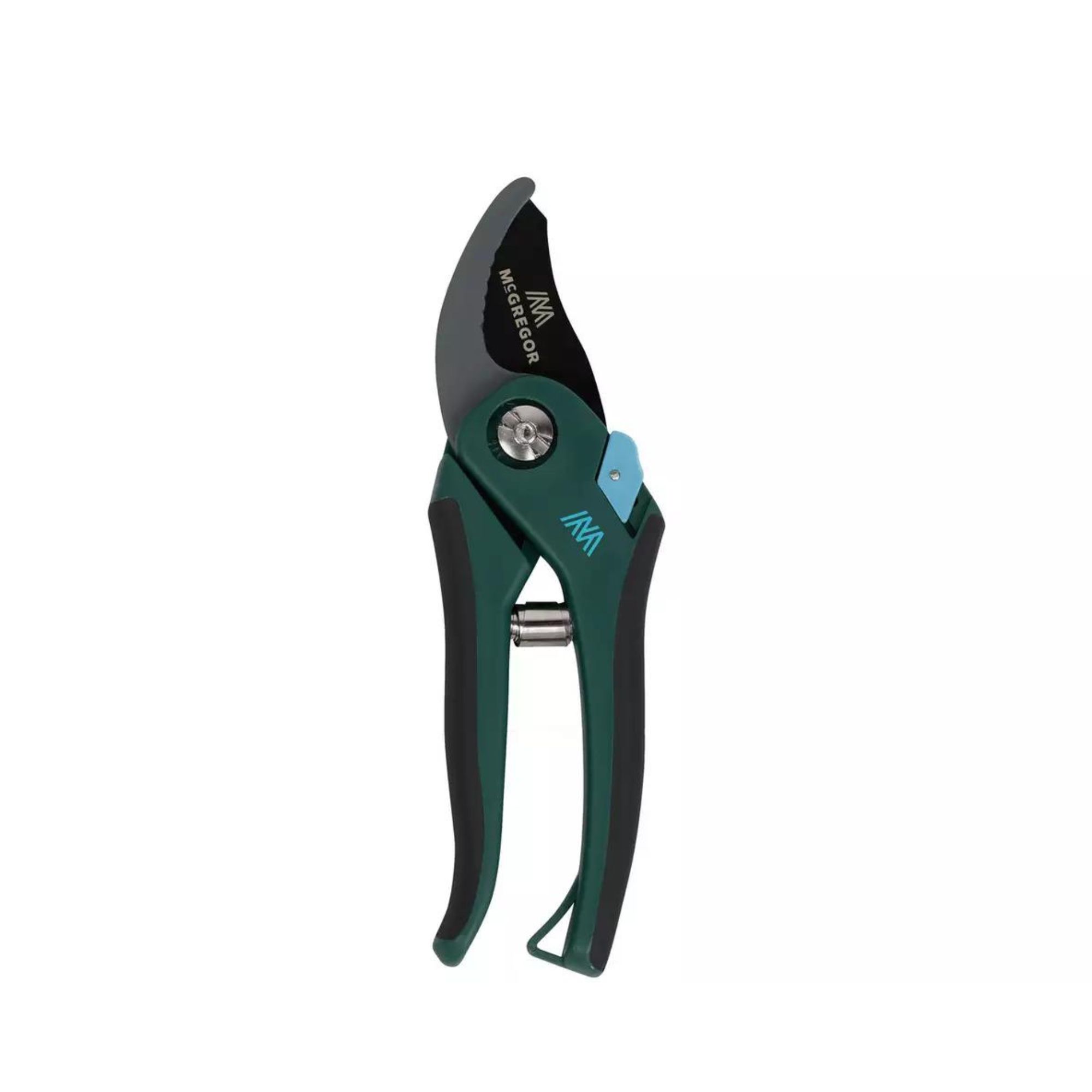
The sharp blades on these pruners are perfect for snipping off the infected leaves on your plant and even come with a locking catch, making them safer to store when you're not using them.
2. Make a natural fungicide
Fungicides are the most effective way to get rid of fungal diseases in plants, and thankfully, fungicides come in so many different shapes and sizes. This means that you can swap harsh chemicals for more natural alternatives.
You can often make your own fungicide using products you already have at home. Morris Hankinson, director of Hopes Grove Nurseries, says, ‘You can use baking soda. This is more of a preventative treatment to avoid it in the first place, but baking soda can help get rid of powdery mildew. Mixed with water and liquid soap, it can be sprayed onto the plants easily and quickly.’
He adds, ‘As strange as it may sound, milk has also been known to get rid of powdery mildew. Acting as both a fungicide and antiseptic, diluting milk with water (40% milk and 60% water) and pouring on the plant should do the trick.’
These aren’t the only options, though. John also suggests using neem oil for plants. He says, ‘Neem oil has antifungal properties and can help prevent and control powdery mildew. Once you've pruned affected areas, it's a good idea to use neem oil to protect the rest of the plant and the plants around the infected area from the disease.’
‘To do this, mix two tablespoons of neem oil with water. Spray the solution on affected plants, covering all surfaces. Repeat this every week.’
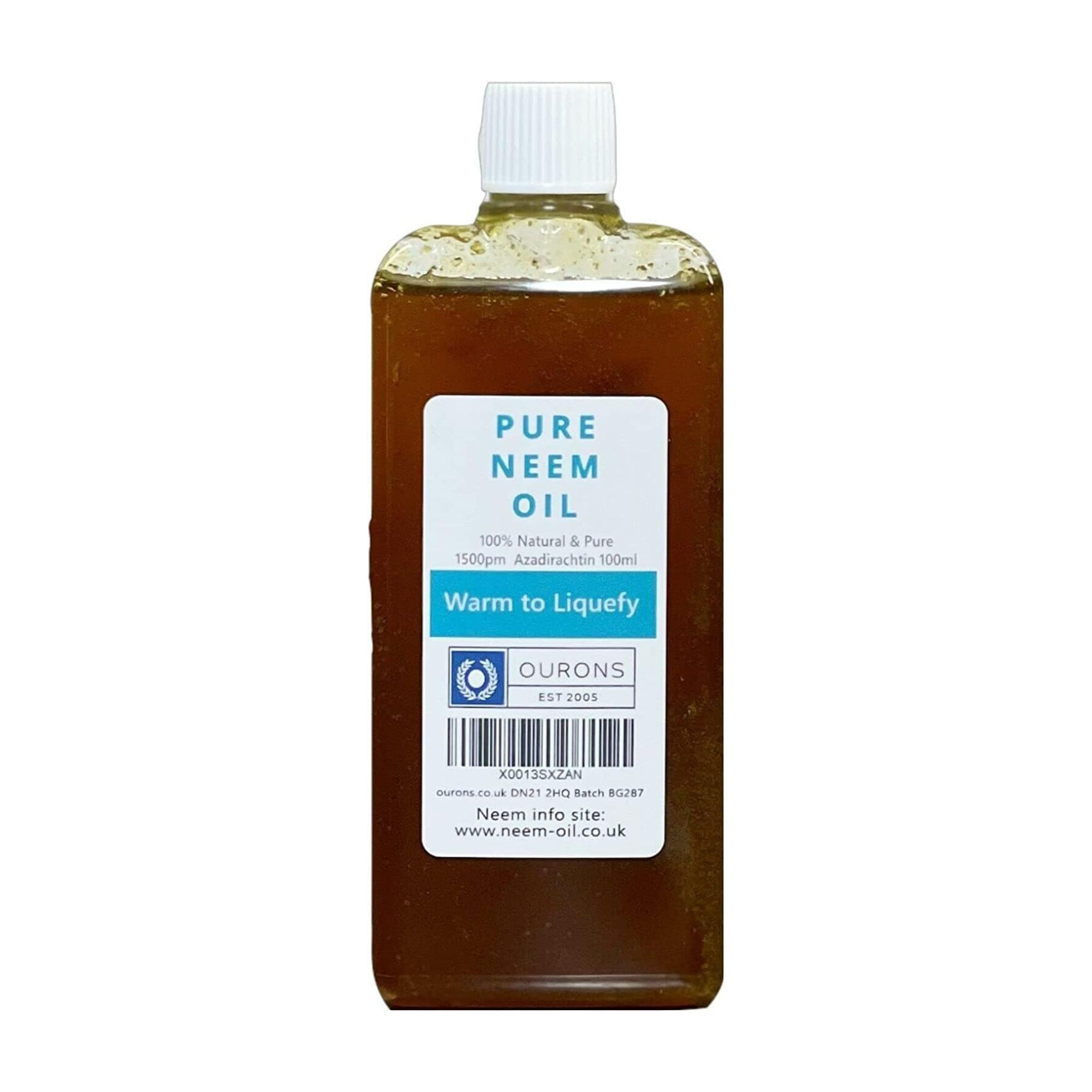
This bottle contains 100% neem oil, which can be warmed up and then be mixed with water and sprayed on your plants as a natural fungicide.

Morris Hankinson is the founder and managing director of Hopes Grove Nurseries Ltd, the UK’s only specialist grower-retailer of hedging plants. He established the thriving business in 1992, shortly after graduating with a Commercial Horticulture Degree from Writtle College, Essex.
3. Prevent future infection
It’s all well and good getting rid of powdery mildew, but if you want to ensure that it doesn’t return, there are certain measures you should take:
Improve air circulation: To prevent powdery mildew, give your plants room to breathe. This could mean moving them to a different area of the garden or pruning them to improve air circulation. Just make sure they have enough sunlight and that you don’t place them near walls or sheds, where the air will often be stagnant.
Water at the base: As powdery mildew thrives in wet and warm environments, you should aim to keep your plants as dry as possible - while also ensuring you don’t make any garden watering mistakes. John says, ‘If you water at the base, then the foliage doesn't need to get unnecessarily wet. You should also water in the morning so that the water can evaporate.’
Mulch your plants: Although you want your plants to be well-watered, you also need to be careful that you water only the roots. Adding a layer of mulch around your plants can help retain moisture in the soil and keep the roots wet. Plus, it can offer a slow and steady release of nutrients to boost the plant back up.
Avoid fertilising: Although natural plant fertilisers offer the perfect opportunity to boost the growth of your plants, you should avoid fertilising any plants previously affected by powdery mildew. That’s because this fungus thrives on healthy, new growth and can increase the spread of the disease. Just let it grow on its own terms for a while.
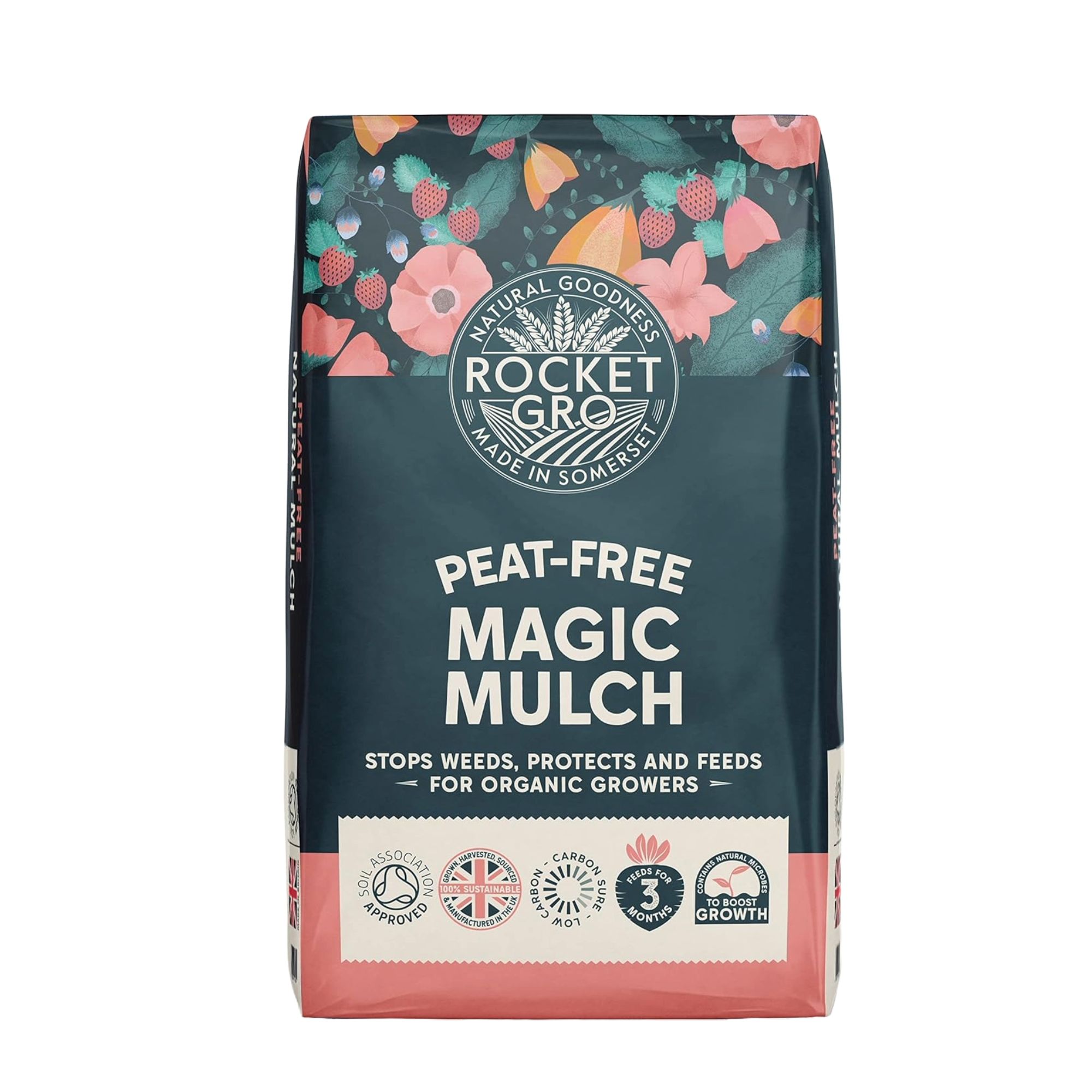
This mulch can be used to maintain the plant's moisture without over-saturating the leaves. Simply add a layer around your plants and reap the benefits of mulching.
FAQs
Can a plant with powdery mildew be saved?
Yes, plants infected with powdery mildew can be saved - but your chances of saving the plant will be higher if you catch it early. That’s because powdery mildew can severely weaken a plant, making it more susceptible to other diseases that could prove fatal.
The best way to save a plant with powdery mildew is to cut away the affected areas and then treat the powdery mildew. Try to do this with a natural fungicide rather than chemicals, as this will keep the rest of your garden happy and healthy.
When treating plants with powdery mildew, it’s also a good idea to keep them away from other plants in your garden to prevent the spread.
Can I just wash off powdery mildew?
You can simply wash off powdery mildew as long as you also treat the plant and prevent it from spreading at the same time. If the plant is infected, simply washing off the white powder on the leaves or stems won’t solve the issue.
Instead, you need to use a natural fungicide and cut off any affected areas of the plant. You should then look into moving the plant, improving air circulation, and watering from the base to stop it from getting worse.
So, if you have powdery mildew on your plants, you don’t need to worry. You can fix it.

Lauren Bradbury has been the Content Editor for the House Manual section since January 2025 but worked with the team as a freelancer for a year and a half before that. She graduated with a Bachelor’s degree in English and Creative Writing from the University of Chichester in 2016. Then, she dipped her toe into the world of content writing, primarily focusing on home content. After years of agency work, she decided to take the plunge and become a full-time freelancer for online publications, including Real Homes and Ideal Home, before taking on this permanent role. Now, she spends her days searching for the best decluttering and cleaning hacks and creating handy how-to guides for homeowners and renters alike, as well as testing vacuums as part of her role as the Ideal Home Certified Expert in Training on Vacuums, having spent over 110 hours testing different vacuum models to date!
-
 Will a conservatory add value to your home and how can you maximise it?
Will a conservatory add value to your home and how can you maximise it?This is what the pros say
By Amy Reeves
-
 I’ve been looking for a new signature scent for my home and The White Company's new fragrance is the exact summer holiday smell I needed
I’ve been looking for a new signature scent for my home and The White Company's new fragrance is the exact summer holiday smell I neededSantorini smells fresh, summery and sophisticated
By Kezia Reynolds
-
 How to remove algae from garden walls in five steps – and the cleaning product experts rave about for tackling it fast
How to remove algae from garden walls in five steps – and the cleaning product experts rave about for tackling it fastExperts share their top tips for getting garden walls algae-free
By Katie Sims
-
 I’m seeing pastel garden furniture at all my favourite brands this spring, but QVC’s sorbet collection impressed me the most
I’m seeing pastel garden furniture at all my favourite brands this spring, but QVC’s sorbet collection impressed me the mostFresh pastel shades are a great way to liven up your outdoor space
By Kezia Reynolds
-
 I spent the afternoon looking through Wayfair's garden sale – these are the 6 pieces I'm buying immediately for summer
I spent the afternoon looking through Wayfair's garden sale – these are the 6 pieces I'm buying immediately for summerThese are my must-have garden buys from the sale
By Holly Reaney
-
 I’ve found the perfect alternative to John Lewis’ sold-out striped garden chair – and you won’t believe where it's from
I’ve found the perfect alternative to John Lewis’ sold-out striped garden chair – and you won’t believe where it's fromJohn Lewis' Sling Garden Chair is one of the most stylish pieces of garden furniture I'd seen – until I tracked down this QVC lounge chair...
By Kezia Reynolds
-
 Lidl is selling a smart tiered planter that will unlock extra planting space in a tiny garden or balcony
Lidl is selling a smart tiered planter that will unlock extra planting space in a tiny garden or balconyWhy I've been eyeing this planter up for my tiny garden
By Kezia Reynolds
-
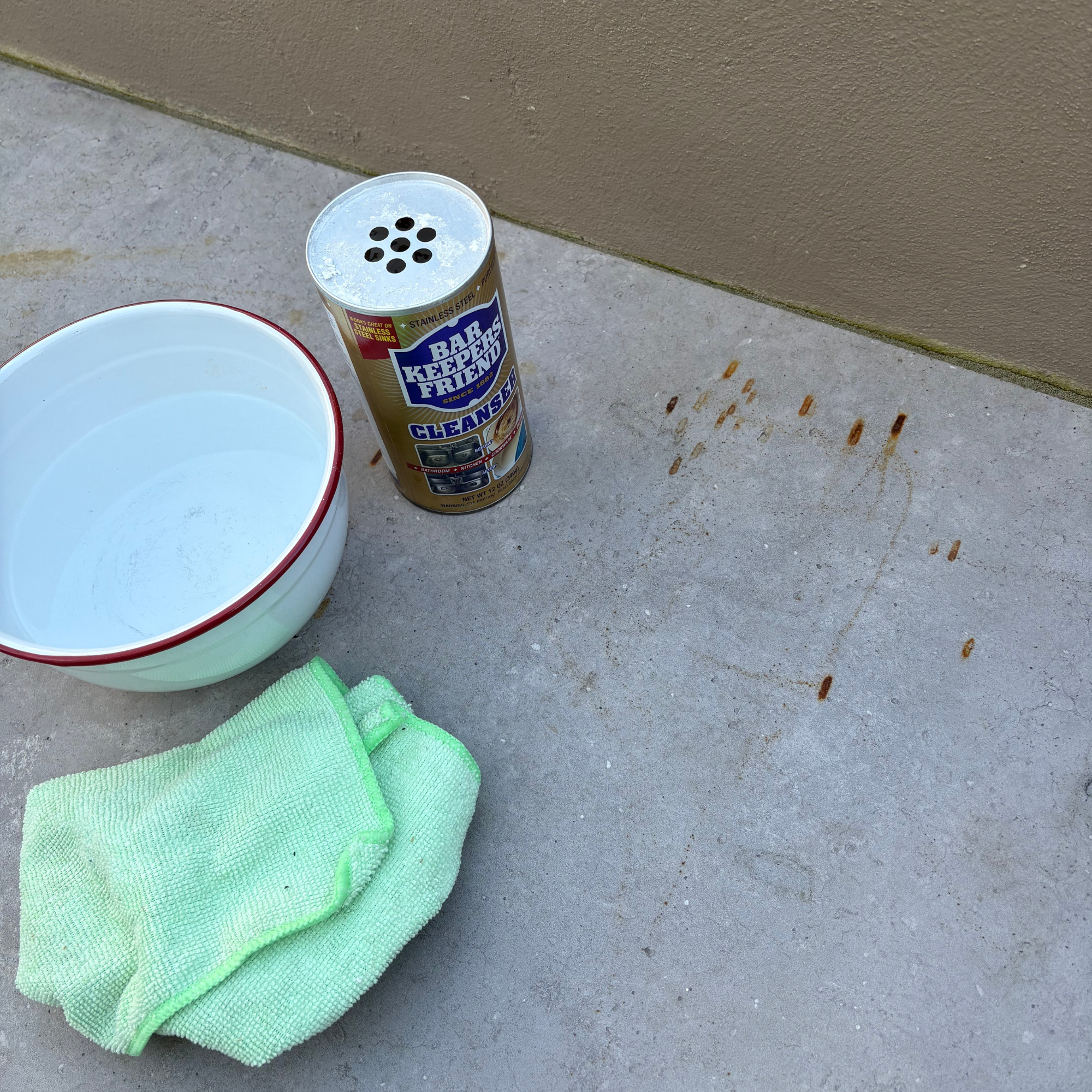 I’ve found the best solution for cleaning stains from a patio - and it’s only £8 on Amazon
I’ve found the best solution for cleaning stains from a patio - and it’s only £8 on AmazonThe stains practically vanish!
By Kezia Reynolds
-
 Lidl’s £15 sun sail is everything you need to create a shady oasis in your garden – and it’s on sale right now
Lidl’s £15 sun sail is everything you need to create a shady oasis in your garden – and it’s on sale right nowWith two stylish colours available, the sun sail will make a chic yet practical addition to any of your garden.
By Kezia Reynolds
-
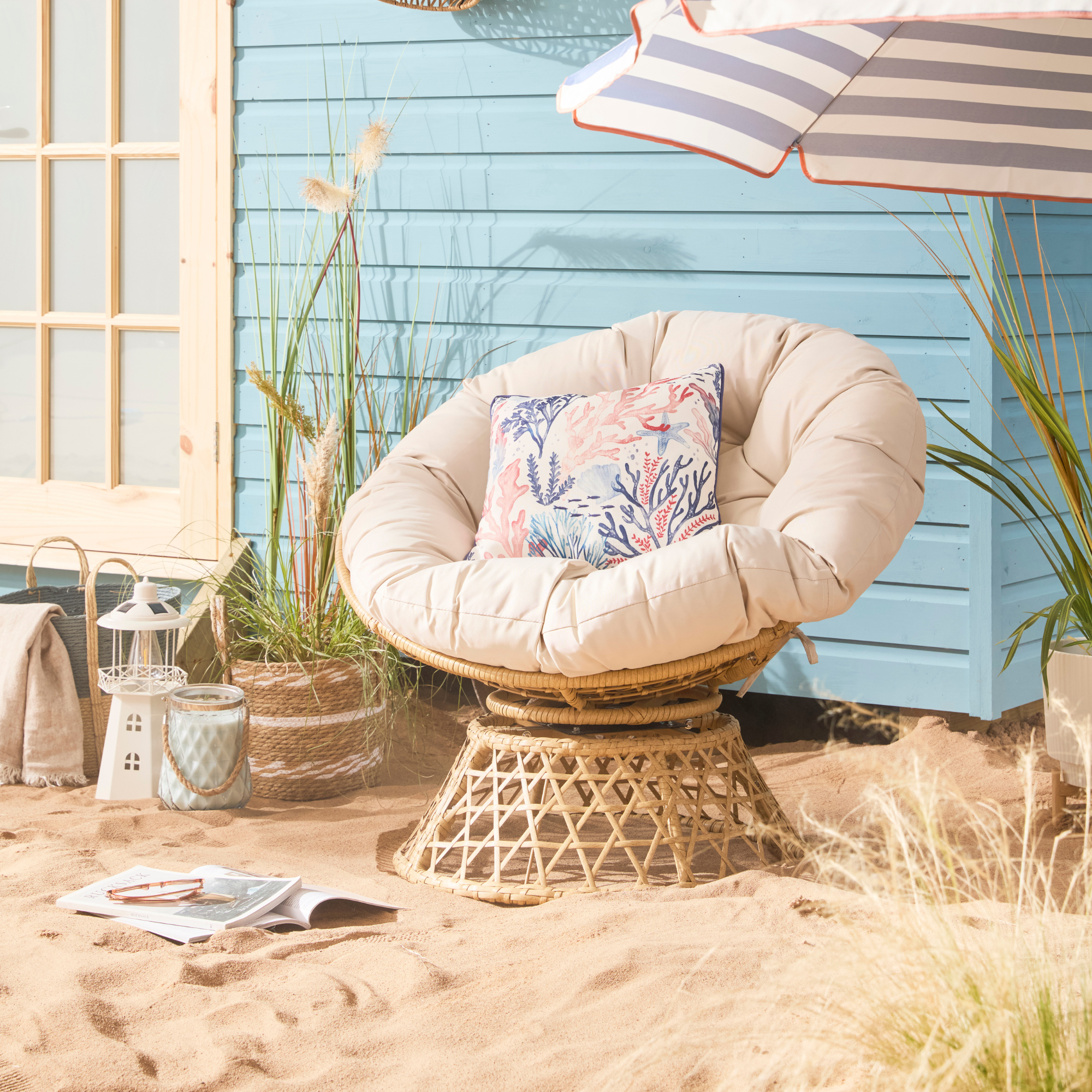 B&M has nailed 2025's breakout garden furniture trend - it's one of the most affordable and stylish I've seen
B&M has nailed 2025's breakout garden furniture trend - it's one of the most affordable and stylish I've seenGet the luxe look for less
By Kezia Reynolds
-
 I was shocked to discover a treasure-trove of designer-look garden furniture at La Redoute on sale right now – 6 chic standouts
I was shocked to discover a treasure-trove of designer-look garden furniture at La Redoute on sale right now – 6 chic standoutsGive your garden that high-end look
By Sara Hesikova